Films with theme "Hitler", sorted by revenue
 , 10minutes
, 10minutesDirected by Clyde Geronimi
Origin USA
Genres Drama, War, Documentary, Animation
Themes Politique, Documentary films about war, Documentary films about historical events, Hitler, Political films, Documentary films about World War II, Children's films
Actors Art Smith
The film features the story of Hans, a boy born and raised in Nazi Germany, who is bred to become a merciless soldier.
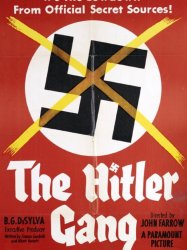
The Hitler Gang (1944)
, 1h41Directed by John Farrow
Origin USA
Genres Drama, War, Documentary, Historical
Themes Politique, Documentary films about war, Documentary films about historical events, Documentaire sur une personnalité, Hitler, Political films, Documentary films about World War II
Actors Roman Bohnen, Martin Kosleck, Victor Varconi, Luis van Rooten, Walter Abel, Ivan Triesault
In 1918 a young soldier called Adolf Hitler recovers from being gassed during World War I. At the behest of the German army, he joins German nationalistic parties, espousing theories that Germany lost the war because they were stabbed in the back. He rises to become dictator of Germany.
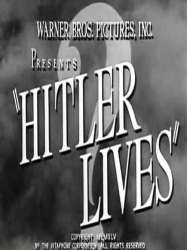
Hitler Lives (1945)
, 17minutesDirected by Don Siegel
Origin USA
Genres Documentary
Themes Documentary films about war, Documentary films about historical events, Documentaire sur une personnalité, Documentary films about politics, Hitler, Political films, Documentary films about World War II
Actors Knox Manning
Documentaire de propagande expliquant que l'idéologie nazie pourrait se diffuser à nouveau malgré la mort du Führer et la défaite allemande.
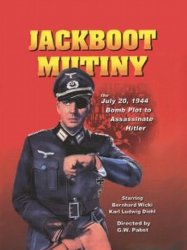
It Happened on July 20th (1955)
, 1h15Directed by Georg Wilhelm Pabst
Origin German
Genres Drama, War, Thriller, Historical
Themes Hitler, Political films
Actors Bernhard Wicki, Karl Ludwig Diehl, Erik Frey, Albert Hehn, Kurt Meisel, Ernst Fritz Fürbringer
Le 20 Juillet 1944, le colonel Baron Schenk von Stauffenberg prépare un attentat pour tuer Hitler, en utilisant une bombe dans son "Grand Quartier Général" dans l'est de la Prusse...

Hitler's Reign of Terror (1934)
, 55minutesOrigin USA
Genres Drama, Documentary
Themes Politique, Documentary films about war, Documentary films about historical events, Documentaire sur une personnalité, Documentary films about politics, Hitler, Political films, Documentary films about World War II
As the picture opens, a re-enacted phone call featuring reporter Cornelius Vanderbilt, Jr. in Germany, and narrator Edwin C. Hill in New York is depicted. Then a parade of people carrying torchlights in Berlin, where Jewish works and other political books are burned. Vanderbilt meets with Hill, and then flies out of the country. Hill talks with Vanderbilt about the problems in his country, then a re-enacted interview between Adolf Hitler and Vanderbilt. During a viewing of World War I battle footage, Hitler's home town, Leonidad, Austria, and his parents' graves are pictured. Vanderbilt goes to Vienna, to see Chancellor Dollfuss, and he films several Austrian Nazi riots during a parade. In a re-enactment, Vanderbilt's passport is stolen, and there are several shots of Nazis abusing Jews. In yet another re-enactment, Vanderbilt interviews Crown Prince Wilhelm, and more books are burned. Helen Keller talks to an interviewer about her books, which were burned by the Nazis. Then a conversation Vanderbilt, Kaiser Wilhelm II in Doorn, Holland, and Prince Louis Ferdinand had is re-enacted. Actual anti-Nazi speeches given by prominent Jews and some Gentiles are shown and the Nazis are shown trying to alter the Bible. In the final scene, Congressman Samuel Dickstein of New York and Hill give speeches directly to the audience, explaining the dangers of Nazism.
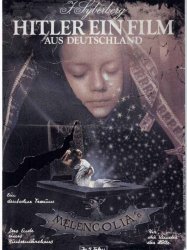 , 7h22
, 7h22Directed by Hans-Jürgen Syberberg
Origin German
Genres Drama, Comedy, Documentary
Themes Hitler, Political films
Actors Harry Baer, Peter Kern, Johannes Buzalski
Au début, le film cite le poème Nachtgedanken de Heinrich Heine écrit en 1844. Le film est divisé en quatre parties : « Der Gral », « Ein deutscher Traum », « Das Ende eines Wintermärchens » et « Wir, Kinder der Hölle ».
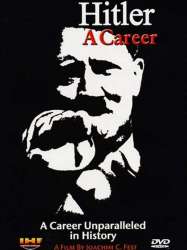
Hitler: A Career (1977)
, 2h35Origin German
Genres Documentary, Historical
Themes Documentary films about war, Documentary films about historical events, Documentaire sur une personnalité, Hitler, Documentary films about World War II
Actors Pierre Mondy, Charlie Chaplin, Otto Gebühr, Fritz Kortner, Ernst Lubitsch, Max Reinhardt
Hitler, une carrière retrace le parcours d'Adolf Hitler, à partir de la fin de la Première Guerre mondiale, de ses débuts politiques, jusqu'à son arrivée au pouvoir en 1933, entraînant l'Allemagne dans un régime totalitaire raciste et antisémite, provoquant le déclenchement de la Seconde Guerre mondiale. Le documentaire traite aussi de la chute d'Hitler et de l'effondrement du régime nazi, avec la défaite de l'Allemagne dans la guerre à partir de la bataille de Stalingrad, en passant par le Débarquement allié en Normandie, jusqu'à son suicide, le 30 avril 1945.

Ace of Aces (1982)
, 1h36Directed by Gérard Oury
Origin France
Genres Comedy, Adventure
Themes Sports films, Transport films, Aviation films, Films about the Olympic Games, Hitler
Actors Jean-Paul Belmondo, Marie-France Pisier, Günter Meisner, Rachid Ferrache, Florent Pagny, Yves Pignot
In 1916, during the thick of World War I, a German and a French fighter ace by the names of Gunther von Beckman (Hoffman) and Jo Cavalier (Belmondo) manage to drag each other out of the sky. An argument and subsequent fistfight about who is to be whose prisoner is rudely interrupted by an artillery barrage, forcing both to stick together in order to survive. In a humorous side scene, corporal Adolf Hitler (Meisner) is berated by his frustrated First Lieutenant Rosenblum for his clumsiness.

Moloch (1999)
, 1h42Directed by Alexandre Sokourov
Origin France
Genres Drama, War, Biography, Historical, Romance
Themes Hitler, Political films
Actors Aleksei Maklakov, Eva Mattes
During the spring of 1942, a few months before the notorious Battle of Stalingrad, Adolf Hitler (Leonid Mozgovoy) retires to his secluded Berghof Retreat nestled on a remote hilltop, within Berchtesgaden in Bavaria to unite with his long-time female companion Eva Braun (Yelena Rufanova). At the residence, Braun spends her spare time with trivial pursuits such as whimsically dancing in the nude, humming to military style marching band music, and rummaging through Hitler's personal belongings. Later, Braun is thrilled to learn that her beloved "Adi", as she affectionately calls him, will be joining her for a visit. Hitler is accompanied by guests Joseph Goebbels (Leonid Sokol), Magda Goebbels (Yelena Spiridonova), Martin Bormann (Vladimir Bogdanov) and a priest (Anatoli Shvedersky) for conversation and playful banter.
 , 1h29
, 1h29Origin USA
Genres Science fiction, Thriller, Action, Adventure, Horror
Themes Hitler, Zombie films, Political films, Dystopian films, Alternate history films
Actors Dominique Swain, Jake Busey, Trevor Kuhn
A group of researchers in Antarctica are abducted by a platoon of gas-masked soldiers wearing swastika arm bands and dragged into a hidden environment in the center of the Earth. There, they discover that Dr. Josef Mengele and a group of surviving Nazi soldiers are plotting an invasion of Earth to create a Fourth Reich.

My Crimes After Mein Kampf (1940)
, 1h30Directed by Alexandre Ryder
Origin France
Genres Drama, Science fiction, War, Biography, Historical
Themes Hitler
Actors Alain Cuny, Pierre Labry, Alexandre Mihalesco, André Valmy, Line Noro, Nicolas Amato
Le film montre la prise du pouvoir par les nazis et se veut un procès de Hitler, au moment où la France vient de déclarer la guerre à l'Allemagne (3 septembre 1939). De composition hybride, il alterne documents originaux et reconstitutions interprétées par des acteurs (docufiction).

The Bunker (1981)
, 2h30Directed by George Schaefer, Gabriel Aghion
Origin USA
Genres Drama, War
Themes Hitler, Political films
Actors Anthony Hopkins, Richard Jordan, Cliff Gorman, James Naughton, Susan Blakely, Martin Jarvis
Le film présente les derniers jours de la vie d'Adolf Hitler passés dans son bunker, lors de la bataille de Berlin.

Hitler: The Rise of Evil (2003)
, 3h5Directed by Christian Duguay
Origin Canada
Genres Drama, War, Biography, Historical
Themes Hitler, Political films
Actors Robert Carlyle, Stockard Channing, Peter O'Toole, Jena Malone, Peter Stormare, Julianna Margulies
The opening of the film shows us a montage of Adolf Hitler's life from the years 1899-1907. The 10-year old Hitler (Thomas Sangster) is shown to be arrogant and disobedient. He has a stern, ill-tempered father, Alois Hitler (Ian Hogg), and a doting mother, Klara Hitler (Stockard Channing), who indulges his dreams of becoming a great artist. One day, his father dies of a heart attack but the young Hitler shows no empathy or concern. Seven years later, a 17-year old Hitler (Simon Sullivan) applies unsuccessfully to the Vienna Arts Academy but is told he lacks the talent to become an artist. Following his mother’s death, he moves to Vienna permanently but is unable to find work and soon becomes destitute and homeless. Influenced by the city’s prevalent anti-semitism, young Hitler becomes convinced that the Jews and immigrants are to blame for his misfortunes.

Mein Kampf (1960)
, 1h40Directed by Erwin Leiser
Genres Documentary
Themes Hitler
La vie, l'ascension et la chute d'un médiocre étudiant aux Beaux-Arts devenu dictateur nommé Adolf Hitler qui se suicida en mai 1945 après avoir entraîné son pays et l'ensemble de la planète dans un incoercible chaos.

Kung Fury 2 (2023)
Origin USA
Genres Science fiction, Martial arts, Comedy, Fantasy, Action, Crime
Themes Films based on mythology, Sports films, Comedy science fiction films, Martial arts films, Hitler, Films based on Norse mythology, Kung fu films
Actors Michael Fassbender, Arnold Schwarzenegger, Alexandra Shipp, Jorma Taccone, David Hasselhoff, Ralf Moeller
Suite du moyen métrage "Kung Fury", dans lequel le plus grand policier de tous les temps, Kung Fury, entame un voyage dans le temps pour stopper le Kung Führer Adolf Hitler.
 Connection
Connection